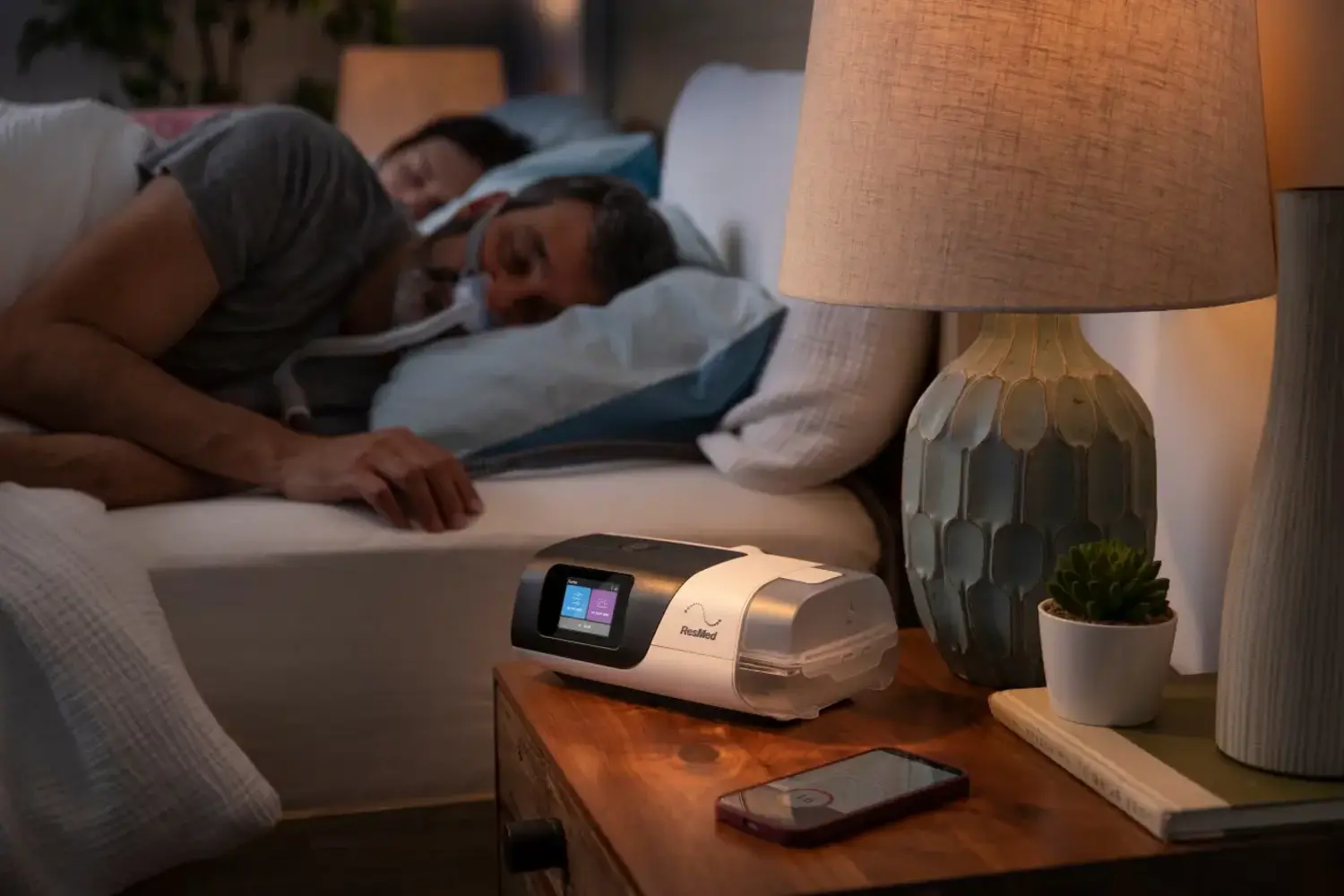CPAP vs BiPAP: Understanding the Key Differences and How They Work
30 Jul, 2025ResMed Nepal | Official Distributor of ResMed Sleep Therapy Devices
If you or someone you care about has been diagnosed with sleep apnea or another sleep-related breathing disorder, you may have come across two terms during your treatment journey—CPAP and BiPAP. Both devices are designed to support better breathing during sleep, but they operate in different ways and are recommended for different needs.
Let’s explore how CPAP and BiPAP machines work, their benefits, and how to determine which might be right for your condition—with insights from sleep therapy experts at ResMed Nepal.
CPAP (Continuous Positive Airway Pressure)
CPAP is the most common therapy for obstructive sleep apnea (OSA). It delivers a constant, steady stream of air through a mask worn over the nose, mouth, or both. This consistent air pressure keeps your airway open, preventing pauses in breathing that occur during sleep.
Think of it as a gentle force that ensures your airway never collapses while you sleep—helping you breathe normally through the night.
BiPAP (Bilevel Positive Airway Pressure)
BiPAP machines offer two distinct pressure settings:
Higher pressure during inhalation (IPAP)
Lower pressure during exhalation (EPAP)
This dual-pressure system can make breathing feel more natural—especially for individuals who find it difficult to exhale against the constant pressure of a CPAP machine. BiPAP is often prescribed for patients with more complex respiratory issues, such as obesity hypoventilation syndrome or certain neuromuscular conditions.
CPAP vs BiPAP: Quick Comparison Table
When Is CPAP Recommended?
CPAP is typically the first line of treatment for obstructive sleep apnea. It's especially suitable when the airway collapses during sleep, which leads to interrupted breathing and loud snoring. CPAP prevents this by delivering constant air pressure, keeping your airway open throughout the night.
Key Benefits of CPAP:
Better sleep quality and reduced daytime fatigue
Effective snoring control, improving sleep for both user and partner
Lower risk of heart problems, stroke, and high blood pressure
Improved concentration, mood, and daily performance
Long-term health benefits when used consistently
While highly effective, some users may experience initial discomfort, such as dryness or skin irritation, which can usually be resolved by adjusting the mask or using a humidifier.
When Is BiPAP a Better Choice?
BiPAP is often prescribed when CPAP therapy isn’t enough—or isn’t well-tolerated. If you find it difficult to exhale against CPAP’s constant pressure, BiPAP’s dual pressure settings can make a significant difference.
It is also better suited for individuals with:
Obesity Hypoventilation Syndrome (OHS)
Central Sleep Apnea
Chronic Obstructive Pulmonary Disease (COPD)
Neuromuscular disorders that affect respiratory function
Benefits of BiPAP Therapy:
Improved comfort for users who struggle with CPAP
Customizable pressure settings tailored to unique breathing needs
Better exhalation support
Effective for more complex respiratory conditions
Enhanced adherence for those who need extra breathing assistance
CPAP vs VPAP: Are They Different?
ResMed’s VPAP™ (Variable Positive Airway Pressure) system is a proprietary form of BiPAP. It offers bilevel pressure like standard BiPAP machines but includes advanced algorithms to adjust pressure in real-time based on your breathing patterns.
In essence, VPAP is a more intelligent version of BiPAP—ideal for those who require greater precision and comfort in their therapy.
Choosing Between CPAP and BiPAP: What’s Right for You?
The decision between CPAP and BiPAP is not one-size-fits-all. It depends on:
Your diagnosis and severity of sleep apnea
Your ability to tolerate constant pressure
Other underlying health conditions
Feedback from your sleep study and healthcare provider
At ResMed Nepal, our team works closely with doctors and sleep specialists to ensure that you get the most appropriate device—customized for your comfort and clinical needs.
Frequently Asked Questions (FAQs)
Q1. What is the main difference between CPAP and BiPAP?
CPAP delivers constant air pressure; BiPAP uses two pressure levels—higher during inhale, lower during exhale.
Q2. Why might someone prefer BiPAP over CPAP?
BiPAP offers more comfortable exhalation and is helpful for those with conditions like OHS or respiratory muscle weakness.
Q3. Can I switch from CPAP to BiPAP?
Yes, especially if you experience discomfort or difficulty exhaling with CPAP. Your doctor can help evaluate and prescribe BiPAP if needed.
Q4. Do both machines use the same type of mask?
Yes. CPAP and BiPAP devices can be used with nasal masks, full-face masks, or nasal pillows, depending on your preference.
Q5. Does BiPAP require more maintenance?
Not significantly. Both require regular cleaning, mask replacement, and filter changes.
Final Thoughts
Both CPAP and BiPAP devices are powerful tools in treating sleep apnea and related conditions. While CPAP remains the standard for most cases of OSA, BiPAP offers added flexibility for patients with specific respiratory challenges.
At ResMed Nepal, we offer the latest CPAP and BiPAP machines, expert consultation, and post-purchase support to help you breathe better and sleep peacefully.
Need Help Choosing the Right Device?
Contact ResMed Nepal today for personalized guidance, sleep device fittings, and expert care throughout your therapy journey.
📞 Call Us: +977-01-5706798

